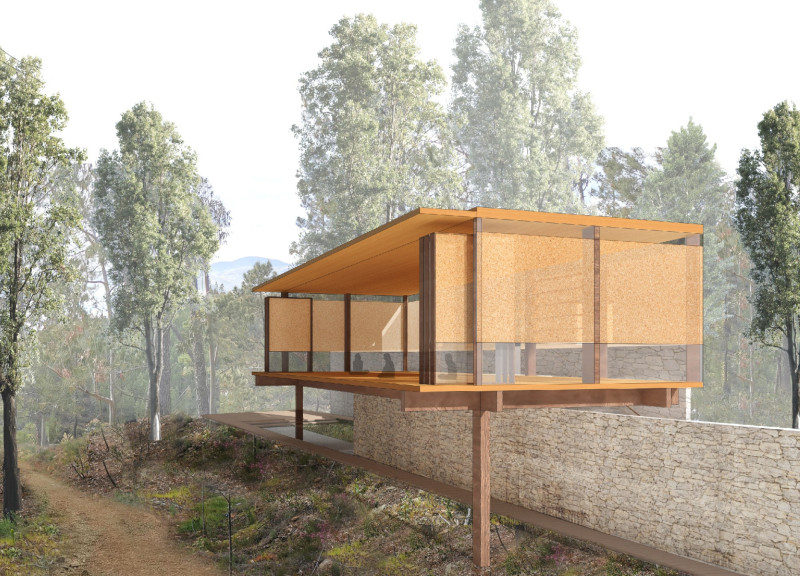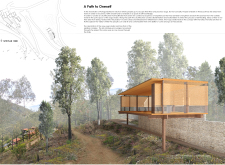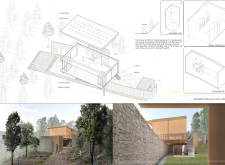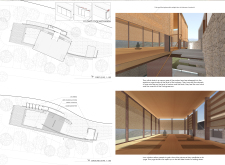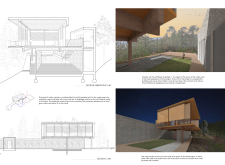5 key facts about this project
The structure embodies a carefully conceived architectural language that prioritizes user experience. Main components include a yoga studio elevated above the ground, private spaces for meditation and reflection, communal facilities, and landscaped gardens. Each element is deliberately designed to encourage a gradual transition from daily life to a state of mindfulness, aligning with the retreat's overarching theme of self-discovery.
Spatial Relationships and Movement
One of the distinctive aspects of this project is its approach to spatial relationships. The layout is intentionally designed to create a sequence of experiences, transitioning visitors from the exterior environment into the retreat's contemplative spaces. The yoga studio features large glass doors that can open to merge the indoor and outdoor environments, allowing natural light to flood the interior and providing unobstructed views of the breathtaking surroundings.
In addition to the yoga studio, the project incorporates private areas for individual reflection and communal spaces for group gatherings. This arrangement emphasizes versatility and flexibility in the use of space, accommodating diverse needs and preferences. The design's emphasis on experiential movement captures the essence of personal exploration while enhancing engagement with the surrounding landscape.
Integration of Nature and Materiality
The architectural design prominently features natural materials that promote sustainability and environmental harmony. Key materials include granite for structural elements, cork for acoustic treatment, timber for warm interior finishes, and glass to create transparency and visual connection with nature. This choice of materials not only enhances the aesthetic quality of the project but also contributes to its thermal and acoustic performance.
Furthermore, the incorporation of gardens serves both functional and symbolic purposes. A meditative garden provides a secluded space for reflection, while another garden invites visitors to engage with the expansive views of the valley. The design effectively integrates these natural elements into the architectural framework, reinforcing the retreat’s mission of fostering a connection between people and the environment.
Architectural Solutions and Sustainable Practices
Innovative architectural solutions and sustainable practices characterize this retreat. The integration of renewable energy technologies, such as solar panels, underscores a commitment to eco-friendly design principles. The cooling pond included in the design provides natural climate regulation, enhancing comfort without relying solely on mechanical systems. This thoughtful consideration of sustainability aligns with the overarching goals of the retreat, creating an environment conducive to personal growth while minimizing the ecological footprint.
In summary, "A Path to Oneself" articulates a functional and experiential approach to architectural design, making it not just a venue for yoga but a holistic environment for personal transformation. To gain deeper insights into the architectural plans, sections, designs, and overall ideas that shape this project, it is encouraged to explore the comprehensive project presentation.


